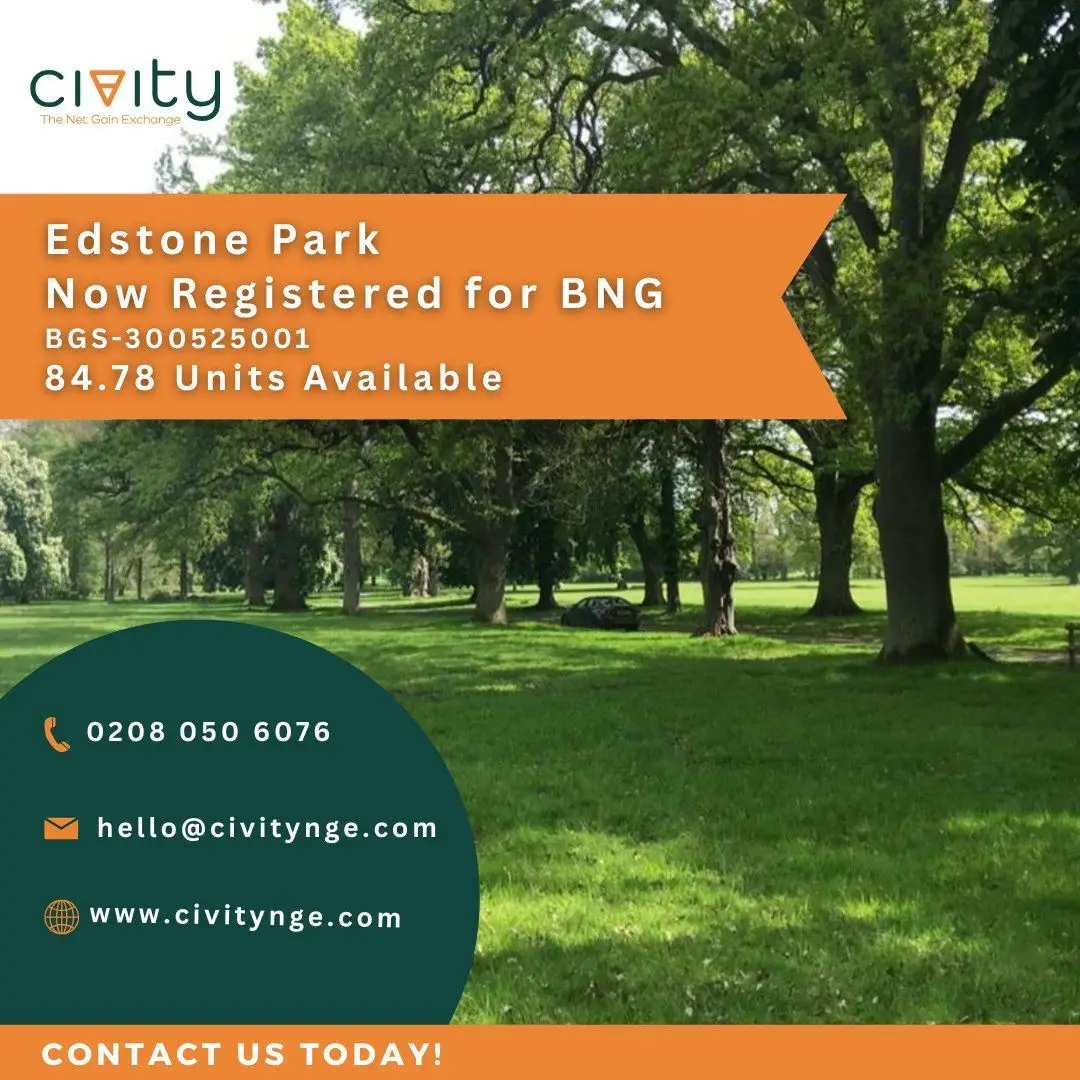With biodiversity net gain (BNG) legislation in the UK, the opportunity to sell biodiversity units has become an increasingly attractive proposition for land managers. If you want to sell biodiversity units and are wondering what land managers need to know, this guide outlines the key aspects you should understand beforehand.
BNG aims to ensure that developments leave nature in a measurably better state than before development. Developers must demonstrate a biodiversity gain plan as part of the planning process, either by improving on-site habitats or through off-site biodiversity units provided by landowners who have enhanced their land specifically for this purpose or as a last resort, via purchase of statutory credits.
How Does Selling Biodiversity Units Work?
At its core, selling biodiversity units allows land owners to be financially compensated for creating new habitats and/or enhancing existing habitats to increase their biodiversity value. These units can then be sold to developers who cannot deliver the required biodiversity gains on their development site.
To ensure credibility, the pre-development biodiversity value of your land must be measured through a baseline habitat survey and assessed using the biodiversity metric, specifically the statutory biodiversity metric. Once enhancements or habitat creation are modelled, the site’s uplift in biodiversity is quantified as units, which can then be listed on the biodiversity gain site register.
These specific biodiversity units must be legally secured via a Section 106 (SE106) Agreement or a Conservation Covenant agreement to ensure the habitat management commitments are met over the required period, typically 30 years. The responsible body or local planning authority will oversee these agreements and ensure long-term delivery.
Your Land and Biodiversity Net Gain
Whether your land consists of existing habitat that can be enhanced or an area where habitat creation is planned, careful preparation is key. The habitat baseline informs how much uplift you can achieve and, therefore, how many units you might sell.
This work involves the creation of the habitats and long-term habitat management and monitoring through a monitoring plan that tracks the progress of your habitat enhancements. The legal agreement ensures you are bound to these commitments, but it also provides assurance to buyers and local planning authorities that your site is suitable for delivering off-site units.
Linking Biodiversity Units to Development Sites
Developers seeking to achieve biodiversity net gain BNG can purchase biodiversity units from suitable sites where they cannot deliver enough biodiversity gains on their own land. Your site can provide these biodiversity units linked to the development site through planning conditions.
The habitat bank itself and the units sold from it are listed on the Biodiversity Gain Sites Register. Your units must be clearly defined, and specific biodiversity units must be linked to the development they are intended to support.
The statutory biodiversity credits scheme remains a fallback option where off-site provision cannot be secured. However, habitat banking and landowners offering off-site biodiversity units are increasingly preferred, as they can often be delivered more locally to the development and, in most cases, offer a cheaper alternative to statutory credits.
Managing Your Site for Long-Term Biodiversity Gains
Selling biodiversity units isn’t simply a one-off transaction. As a habitat bank operator or land manager, you must demonstrate a clear, enforceable plan for managing habitats and reporting outcomes per an agreed Habitat Management and Monitoring Plan. Monitoring is required throughout the project’s lifetime (by suitably qualified professional ecologists) to ensure continued compliance with the commitments made in the HMMP and enforced via the SE106/Conservation Covenant.
Sites delivering biodiversity net gain units need to deliver the promised improvements in ecological value (i.e the number and types of units they have sold). This means adhering to the agreed habitat management strategies and addressing any issues that arise over time. Responsible bodies/local planning authorities will expect these obligations to be met, ensuring the biodiversity gain site delivers its intended outcomes for nature conservation.
Opportunities for Land Owners in the BNG Market
A Recent Example: Edstone Park
Edstone Park is officially registered on the Biodiversity Gain Site Register (300525001) with 84.78 biodiversity units available. The site delivers wood pasture and parkland, one of the few habitats with very high distinctiveness accepted by the statutory metric, and is believed to be the first registered BNG site in the Stratford-on-Avon District.
Developed in partnership with RSK Wilding and Lodders Solicitors, the project involved a bespoke legal structure and phased delivery model to match real-time demand. It features a range of habitat enhancements, including protection of ancient trees, new tree planting for age-diverse tree coverage, and species-rich grassland managed through low-intensity grazing.
This kind of project shows what’s possible when land is carefully planned and managed for off-site biodiversity gain and how complex sites can be developed with the right partnerships.

Want To Learn More?
If you are considering providing biodiversity units, it’s essential to understand the biodiversity net gain process and engage with ecological experts to ensure your off-site gains are credible and desirable to potential buyers. Doing so contributes to the broader goals of enhancing natural ecosystems while securing financial benefits from your land’s improved biodiversity value.
At Civity, we work with landowners, developers, and planners to navigate the complexities of biodiversity net gain. Our ecologists can undertake the baseline habitat assessment of your land. We will then work with you to decipher a strategy and produce a bespoke HMMP outlining how the land can be best managed to deliver ecologically backed BNG Units. We undertake all the legwork to get your site on the Register, working with the Responsible Body/LPA to secure the SE106/Conservation Covenant. We are responsible for brokering the biodiversity units and act as your monitoring ecologist for the entire 30+ years of the scheme. You, the landowner, receive payment to undertake the habitat improvement works and retain ownership of the land. To learn more about how we can help you enter this emerging market, visit https://civitynge.com/.
** Civity provides the information in this blog for general guidance and awareness around Biodiversity Net Gain (BNG) policy and practice in England. While we aim to ensure content is accurate and up to date at publication, it should not be relied upon as legal advice or as a substitute for detailed planning or ecological consultancy input.
Civity does not provide legal services and cannot offer guarantees on planning decisions, BNG unit sales, or outcomes determined by Local Planning Authorities, Natural England, or Responsible Bodies.
Readers are encouraged to seek professional advice relevant to their specific circumstances, particularly regarding legal agreements, land use planning, or habitat surveys.


